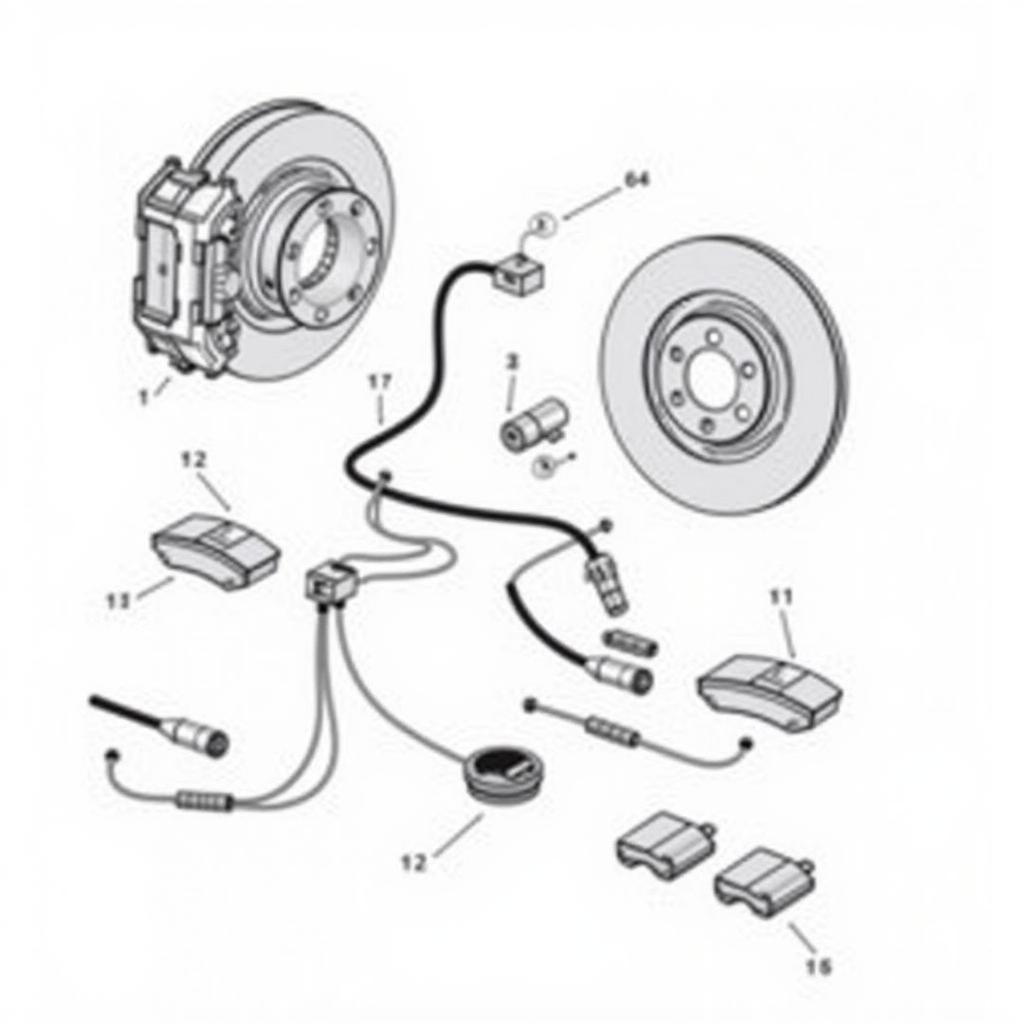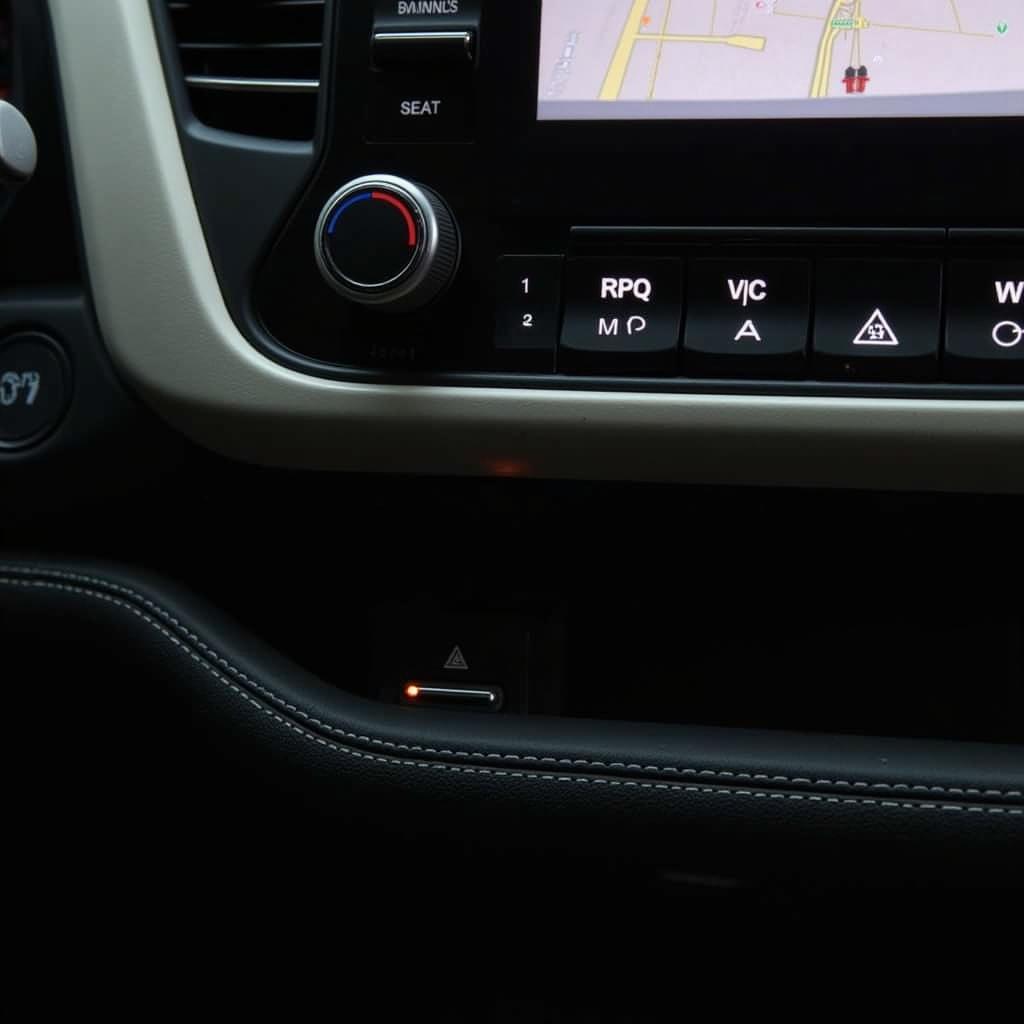The seat belt warning light is a crucial safety feature in your vehicle, reminding you and your passengers to buckle up. However, there are times when this light might stay on or malfunction, even when all seat belts are properly fastened. If you’re wondering “how to reset seat belt warning light,” you’re in the right place. This comprehensive guide will walk you through the common causes, troubleshooting steps, and solutions to reset your seat belt warning light.
Understanding Your Seat Belt Warning System
Modern vehicles are equipped with sophisticated seat belt warning systems that go beyond a simple light and chime. These systems are designed to detect the presence and engagement of seat belts, ensuring the safety of all occupants. Here’s how they typically work:
- Seat Belt Sensors: Sensors located in the seat belt buckles and receivers detect whether the seat belts are fastened.
- Warning Light: Located on the dashboard, this light illuminates to indicate an unfastened seat belt or a system malfunction.
- Audible Chime: A distinct chime sound often accompanies the warning light, providing an additional auditory reminder.
- Advanced Systems: Some vehicles have advanced systems that might include features like passenger weight sensors, seat belt pretensioners, or even integration with airbag control modules.
Understanding these components can help you better troubleshoot and address issues related to your seat belt warning light.
Common Causes of a Seat Belt Warning Light Malfunction
Before attempting to reset your seat belt warning light, it’s essential to understand the potential causes behind the issue. Here are some common culprits:
- Faulty Seat Belt Buckle or Receiver: A damaged or dirty buckle or receiver can interfere with the sensor, causing a false warning.
- Wiring Issues: Worn-out, loose, or corroded wiring within the seat belt system can disrupt the signal transmission.
- Software Glitch: Like any electronic system, your car’s computer system can experience software glitches that affect the seat belt warning system.
- Faulty Sensor: The sensor itself might be malfunctioning due to wear and tear, water damage, or other factors.
- Aftermarket Modifications: Installing aftermarket seats or modifying the seat belt system without proper care can lead to wiring and sensor issues.
Troubleshooting Your Seat Belt Warning Light
If your seat belt warning light stays on even when all seat belts are fastened, try these troubleshooting steps:
- Check Seat Belt Connections: Ensure all seat belts are properly fastened and that there’s no obstruction in the buckles or receivers.
- Inspect Buckles and Receivers: Visually examine the buckles and receivers for any visible damage, dirt, or debris. Clean them if necessary.
- Check for Wiring Issues: If comfortable, inspect the wiring beneath the seats for any signs of damage, looseness, or corrosion. If you’re unsure, it’s best to consult a professional.
- Check for Recalls: Visit your car manufacturer’s website or contact your dealer to check if there are any recalls related to your vehicle’s seat belt system.
- Consult a Professional: If the issue persists, it’s best to consult a qualified automotive electrician or mechanic for diagnosis and repair.
How to Reset a Seat Belt Warning Light
The process of resetting your seat belt warning light can vary depending on the make, model, and year of your vehicle. Here are some general methods:
Method 1: Battery Disconnection
- Disconnect the Battery: Locate your car battery and disconnect the negative terminal using a wrench.
- Wait: Wait for 15-30 minutes to allow the vehicle’s electrical system to discharge fully.
- Reconnect the Battery: Reconnect the negative terminal to the battery and tighten the nut securely.
- Test the System: Start your vehicle and check if the warning light has reset.
Method 2: OBD-II Scanner
- Connect the Scanner: Plug an OBD-II scanner into your vehicle’s OBD-II port, usually located under the dashboard.
- Read Codes: Turn on the scanner and select the “Read Codes” option to retrieve any stored fault codes related to the seat belt system.
- Clear Codes: Once you’ve noted down the codes, select the “Clear Codes” option to erase them from the vehicle’s memory.
- Test the System: Disconnect the scanner, start your vehicle, and verify if the warning light has been reset.
Method 3: Specific Vehicle Procedures
Some vehicles might have unique reset procedures outlined in their owner’s manuals. Consult your manual for model-specific instructions.
When to Seek Professional Help
While some seat belt warning light issues can be resolved with simple troubleshooting, others require professional expertise. It’s crucial to consult a qualified mechanic or automotive electrician in the following scenarios:
- You’ve tried troubleshooting but the issue persists.
- You suspect wiring issues or sensor malfunctions.
- Your vehicle has a complex electrical system.
- You’re uncomfortable working with electrical components.
Remember, attempting to fix complex electrical issues without proper knowledge can potentially damage your vehicle’s electrical system and compromise your safety.
Tips for Preventing Future Issues
Here are some proactive measures you can take to prevent future seat belt warning light problems:
- Regularly Inspect Seat Belts: Periodically check your seat belts for wear and tear, including fraying, cuts, or looseness.
- Keep Buckles and Receivers Clean: Use a vacuum cleaner and a slightly damp cloth to remove dust, dirt, and debris from the buckles and receivers.
- Address Warning Lights Promptly: Don’t ignore any warning lights on your dashboard, including the seat belt warning light.
By addressing issues promptly and adopting preventive measures, you can ensure the optimal functioning of your seat belt warning system and prioritize your safety on the road.
Conclusion
Resetting a seat belt warning light is often a straightforward process, but it’s essential to address the underlying cause to ensure the proper functioning of this crucial safety feature. By following the troubleshooting steps and reset methods outlined in this guide, you can resolve many common issues. However, remember to prioritize your safety and seek professional assistance when dealing with complex electrical problems or if you’re unsure about any procedure. Regular maintenance and prompt attention to warning signs can go a long way in preventing future issues and ensuring a safe driving experience for you and your passengers.


